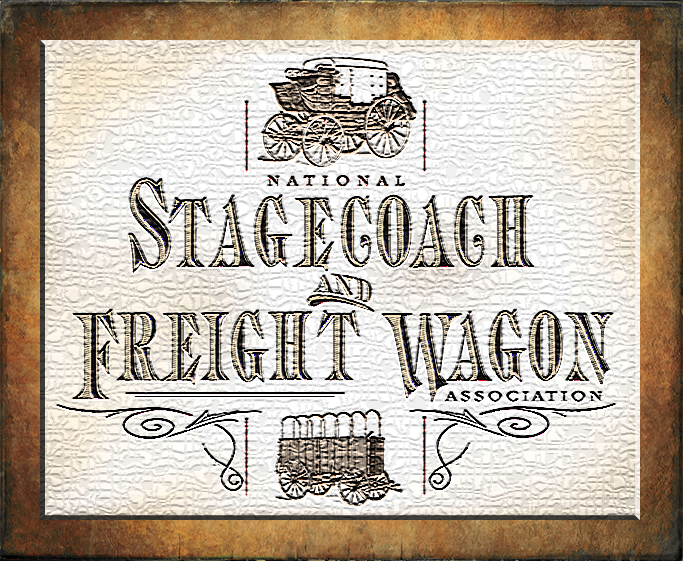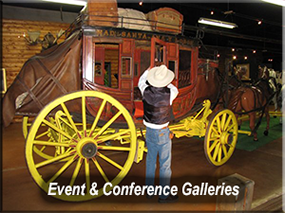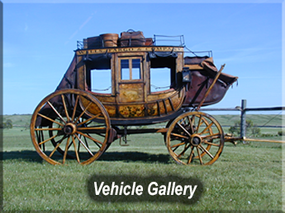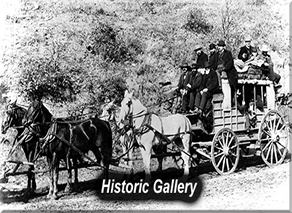Stagecoach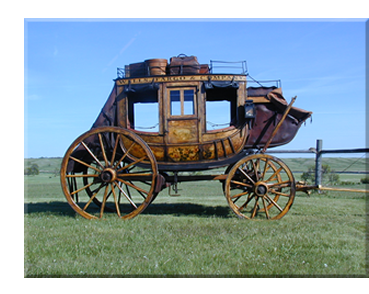
Definition
The Stagecoach was a vehicle powered by horses or mules to run between stage stations.
Utility
They carried people, mail, express, packages, gold, and money.
The stagecoach and coaching industry of the frontier days have been replaced by the bussing, mail delivery, parcel shipping, and armored trucking industries of today.
Types/Classes/Styles/Models
Stagecoach types can be divided by their appearance and utility.
Mountain Wagon
Description
The mountain wagon was a type of stagecoach. It had the simplest design of all the stagecoach designs. It was mostly used as a passenger wagon in mountainous regions of the far West from the mid 1800's to the early 1900's.
Manufacturers
Studebaker
Characteristics
Three reaches
Side springs
Elliptical cross springs
Two to Four seats positioned crosswise
High standing top
Luggage rack
Roll down curtains for protection
Mud Wagon
Other Names
Stage wagon
Description
The mud wagon was a type of stagecoach. It had a more complex design than the mountain wagon, but was simpler than the Concord stagecoach. It was mostly used as a passenger wagon and was designed to be light weight. It was used in mountainous regions with poor roads. The name "mud wagon" comes from the fact that the roads it was used on were often muddy.
Manufacturers
Abbot-Downing
M.P. Henderson
Characteristics
Light weight design
Exterior framing
Iron rockers
Leather thorough braces
Canvas storm curtains
Yosemite Coach
Description
The Yosemite coach was a type of stagecoach. It was used as a touring wagon in our National Parks.
Manufacturers
Abbot-Downing
Henderson
Characteristics
Leather thorough braces
Concord Coach
Description
The Concord coach was a type of stagecoach. It had the most complex design of all stagecoaches.
Manufacturers
Abbot-Downing
Characteristics
Leather thorough braces
Eastern Model Characteristics
Rigid front box boot
Rigid open rear luggage rack
Single front bunter
Folding coach step
Rear axle mounted beneath reaches
Kingpin in front of axle
Splinter bar
Standard castor
Western Model Characteristics
Flexible leather bag boot
Leather covered rear boot on flexible frame
Two to three bunters
Pad on the brake served as a coach step
Coach lamps were designed to invert the glass frame
Heavy ¾” thick iron tires
Axle mounted on top of reach
Doubletree
Albany bed plate
Designs
Stagecoaches can be divided into eastern and western designs. The eastern types were used where the terrain was flatter and less rugged. The western types were used in the rugged mountain terrain.
Eastern Stagecoaches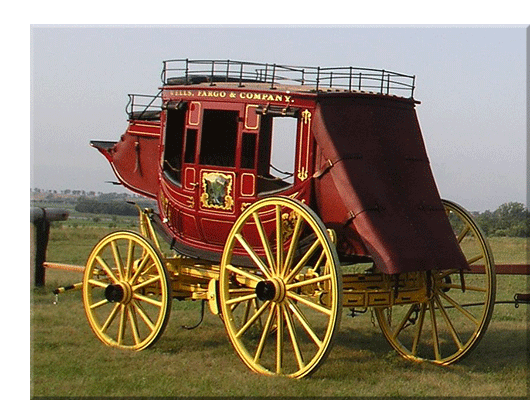
- Eastern Concord Stagecoach
- Eastern Mud Wagon
- Eastern Mountain Wagon
Western Stagecoaches
- Western Concord Stagecoach
- Western Mud Wagon
- Yosemite Wagon
- Western Mountain Wagon
Etiquette
An historical account of passenger etiquette for riders a stagecoach.
